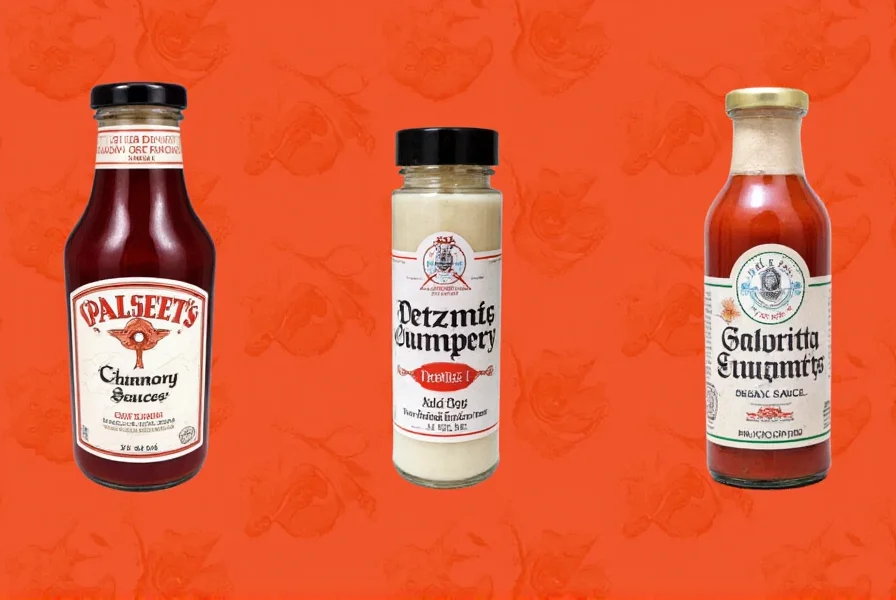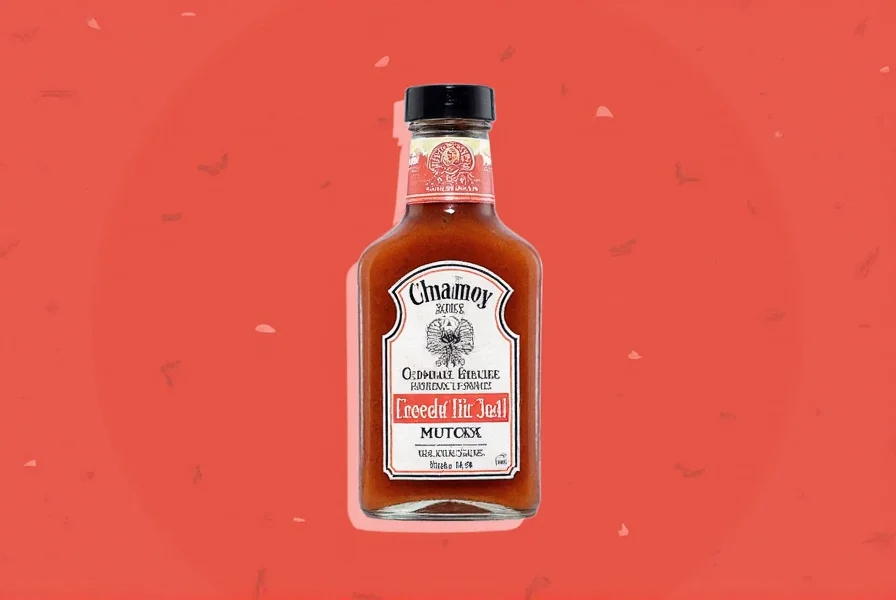Originating from a fascinating fusion of Chinese and Mexican culinary traditions, chamoy sauce has evolved into one of Mexico's most beloved flavor experiences. This vibrant condiment bridges the gap between sweet and savory, offering a complex taste sensation that enhances everything from fresh fruit to street tacos.
The Unique Flavor Profile of Chamoy
What makes chamoy truly special is its perfect balance of four distinct taste elements:
| Taste Element | Primary Ingredients | Flavor Contribution |
|---|---|---|
| Sweetness | Sugar, fruit syrup | Counteracts acidity and heat |
| Sourness | Lime juice, tamarind | Provides refreshing tanginess |
| Spiciness | Chilies (like arbol or guajillo) | Creates warming heat sensation |
| Umami/Saltiness | Salt, pickling brine | Enhances overall flavor complexity |
This precise balance explains why chamoy sauce ingredients typically include dried fruits, chilies, vinegar, sugar, and salt. The magic happens during the pickling process when these components meld together over time.
Historical Origins: From China to Mexico
Chamoy's story begins with Chinese immigrants who brought preserved fruits called li hing mui to Mexico during the Manila Galleon trade era. These salted, dried plums were adapted using local Mexican ingredients like chilies and lime, creating what we now know as chamoy sauce.
Unlike what some might search for as "chamoy sauce made of" exclusively Mexican ingredients, the authentic version represents a beautiful cultural fusion. The traditional preparation involves:
- Pickling fruits (apricots, plums, or mangoes) in a brine solution
- Adding chili powder for heat
- Blending with lime juice for acidity
- Adjusting sweetness with sugar or piloncillo
How Chamoy Sauce Is Used in Mexican Cuisine
Understanding how to use chamoy sauce reveals its versatility across Mexican food culture. Street vendors commonly apply it to:
- Fresh fruit cups (especially mango, pineapple, and watermelon)
- Tamarind candies and lollipops
- Micheladas (Mexican beer cocktails)
- Tacos and elotes (Mexican street corn)
- As a dipping sauce for snacks
When exploring where to buy chamoy sauce, you'll find it in three primary forms: liquid sauce, thick paste, and dry powder. Each variation serves different culinary purposes, with the liquid version being most versatile for what is chamoy sauce typically used for in home cooking.
Homemade Chamoy Sauce Recipe
Creating authentic chamoy sauce at home allows you to control the flavor balance. Here's a simplified version of a traditional Mexican chamoy sauce recipe:
- Soak 1 cup dried apricots in 2 cups water overnight
- Add 2 tablespoons chili powder, 1/4 cup lime juice, and 1/4 cup sugar
- Simmer until fruits soften (about 20 minutes)
- Blend until smooth
- Strain through cheesecloth
- Cool and store in refrigerator for up to 2 weeks
This homemade version captures the essence of what chamoy sauce is without artificial preservatives. For those wondering about the difference between chamoy and tamarind, note that while tamarind provides sourness in many Mexican sauces, chamoy incorporates tamarind as just one component among many.

Commercial Variations and Where to Find It
When searching for where to buy chamoy sauce, you'll encounter several popular brands including:
- La Costeña Chamoy
- El Yucateco Chamoy
- Maggy Chamoy
- Tapatío Chamoy
These products range from mild to extremely spicy, catering to different palates. Most major grocery chains now carry chamoy sauce in their international or Hispanic food sections, reflecting its growing popularity beyond traditional Mexican markets.
For those interested in chamoy sauce ingredients beyond the basic recipe, commercial versions often include preservatives like potassium sorbate and sodium benzoate to extend shelf life. Reading labels helps identify products with more natural ingredients if that aligns with your preferences.

Chamoy in Modern Culinary Applications
Contemporary chefs have expanded traditional uses of chamoy sauce, incorporating it into:
- Gourmet tacos with innovative protein pairings
- Cocktail infusions and margarita rims
- Dessert glazes for churros and other sweets
- Marinades for grilled meats and vegetables
- Specialty popcorn seasonings
This evolution demonstrates how understanding what is chamoy sauce has moved beyond traditional contexts while maintaining its essential flavor identity. The sauce's adaptability makes it a valuable addition to any adventurous cook's pantry.
Frequently Asked Questions About Chamoy Sauce
What are the main ingredients in authentic chamoy sauce?
Authentic chamoy sauce contains dried fruits (typically apricots or plums), chilies, lime juice, sugar, and salt. The fruits are first pickled, then blended with the other ingredients to create the signature sweet-sour-spicy flavor profile that defines traditional Mexican chamoy.
How does chamoy differ from regular hot sauce?
Unlike most hot sauces that focus primarily on heat, chamoy delivers a complex balance of sweet, sour, spicy, and umami flavors. While hot sauces typically use vinegar as a base, chamoy incorporates fruit elements from the pickling process, creating a thicker consistency and more nuanced taste experience.
Can I make chamoy sauce without artificial preservatives?
Yes, you can create homemade chamoy sauce without artificial preservatives by using the traditional method of pickling fruits in a salt brine solution. This natural preservation method requires longer preparation time but yields a cleaner ingredient profile. Homemade versions typically last 2-3 weeks when refrigerated.
What's the difference between chamoy sauce and chamoy powder?
Chamoy sauce is the liquid form made from blended pickled fruits, while chamoy powder is a dehydrated version containing chili powder, lime, and sugar. The powder is often used as a seasoning for fruits or snacks, while the sauce serves as a dipping condiment or ingredient in recipes. Both deliver similar flavor profiles but in different applications.
Is chamoy sauce gluten-free and vegan?
Traditional chamoy sauce is naturally gluten-free and vegan, as it's made from fruits, chilies, lime, and salt. However, some commercial brands may add non-vegan ingredients or process their products in facilities that handle allergens. Always check labels if you have specific dietary requirements, as understanding what is chamoy sauce made of can vary by manufacturer.










 浙公网安备
33010002000092号
浙公网安备
33010002000092号 浙B2-20120091-4
浙B2-20120091-4